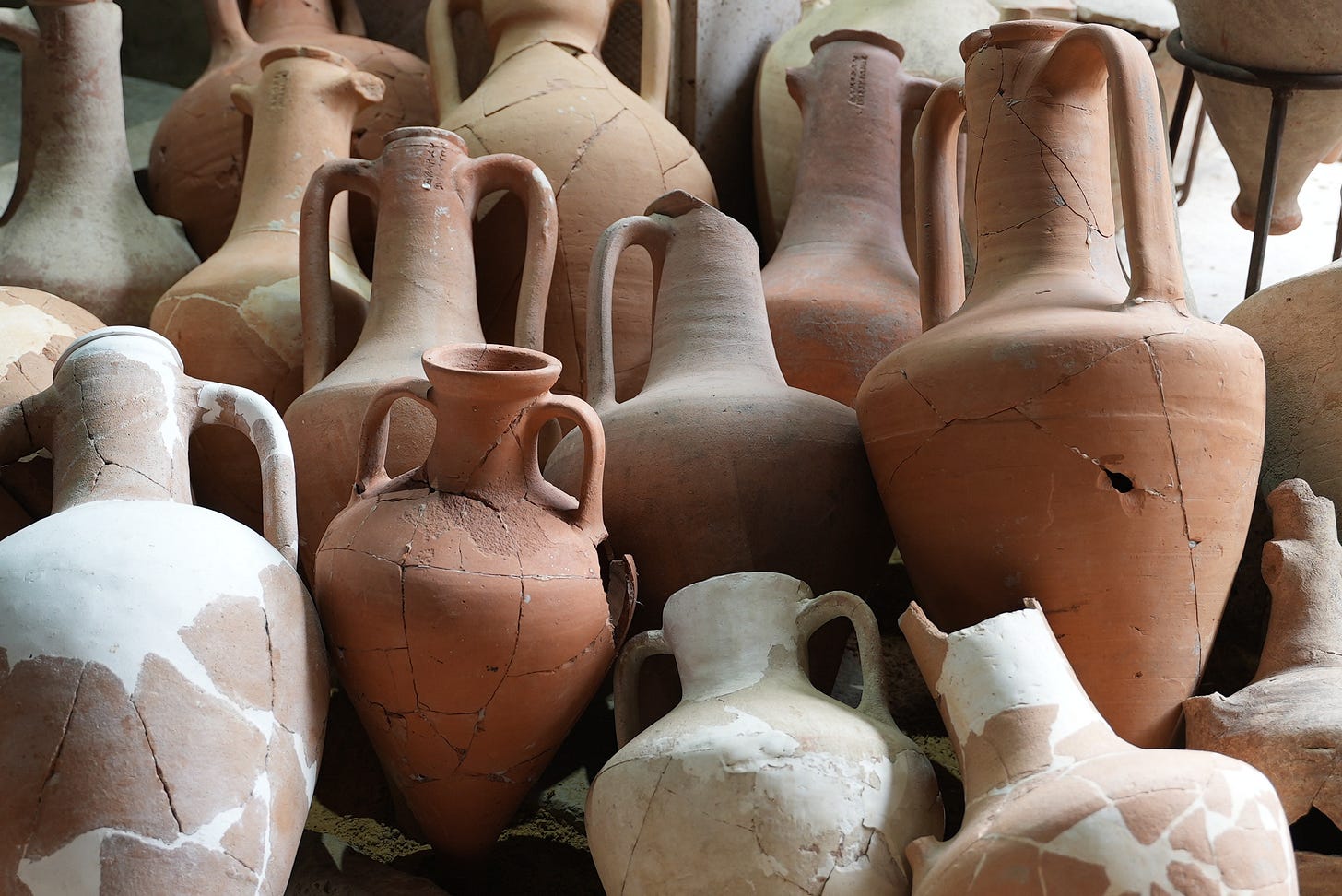Over the last couple of weeks, Ben has been taking a long hard look at the winemaking culture and traditions of the Canary Islands – take a look if you have the time; it’s fascinating reading.
This week, we’re changing tack and going back to basics to ask ourselves the question: ¨Who invented wine?¨ Now at some point in our lives, as we’ve sat nurturing a glass of something delicious, I’m sure we’ve all asked ourselves the age old question ¨Where does wine come from?¨ And by that we don’t mean Sainsbury’s, Mercadona, Mrs Beeton’s Bottle Shop or your favourite online merchant, but rather the long view – when and how did us humans discover that fermented grape juice tasted a whole lot better than plain old rainwater?
Well, the short answer – like most things - is we’ve got the neolithics to thank for all that. When prehistoric man crawled out of his or her cave about 10,000 BC, put down the spear and settled in one place to raise crops and keep domestic livestock it marked the end of the hunter-gatherer lifestyle and opened the door to a more organised approach to food production. This began around the river valleys of the Tigris and Euphrates rivers (in present day Iran and Iraq) before expanding outwards to the surrounding area in what is now Syria, Israel, Lebanon and Jordan.
Ancient Greek vessels for storing wine.
At about the same time, early ¨domesticated¨ man discovered the trick to ceramic pottery and new, leak-proof vessels enabled him to store and transport wine and other beverages of the time. This great step forward boosted wine’s role in pagan rituals as an offering to the gods and came in very handy for Noah too when he had a glass too many before loading vines – and everything else - onto the Ark (Genesis, Chapter 9).
But where exactly had vines first appeared and who laid claim to the lightbulb moment that discovered fermentation? Well as you might expect given how long ago it was, the jury is still out on that one, although the most reliable archaeological studies to date suggest the wild grapevine (or vitis vinifera subsp. sylvestris to give it its proper name) was probably first domesticated somewhere between north-west Iran and the Caucasus.
Shulaveri Gora and Gadachrili Gora were two Neolithic settlements established between 6,000 and 5,000 BC about 50km south of Tiblisi, capital of present day Georgia. Here, as well as 650km to the south at Hayyi Firuz Tepe in north-west Iran, archaeologists have discovered remains of large tinajas, or clay amphorae. The size of the vessels, and the fact that they were lined up and buried in the ground suggests they were used for both large-scale vinification and storage of wine – forerunners, in fact, of the famous qvevri which remain a feature of Georgian winemaking to this day.
Traditional wine cellar with qvevri at the Nekresi monastery in eastern Georgia.
Of course, plenty of other countries could lay claim to having invented our favourite tipple, whether Armenia, Greece, Sicily or as far afield as China. And the ¨altered state of consciousness¨ induced by fermented beverages ensured they became a staple of religious rites across the world. Slowly wine culture expanded west to Europe, arriving in Spain with the Phoenicians about 3,000 years ago. While initial vineyard plantings tended to be in the warmer parts of southern Europe, the Roman occupation of France and England drove a new demand for wine, and brought with it the first plantings of vineyards. As the West got used to their new tipple, European expansion from the fifteenth century onwards took vitis vinifera across the Atlantic to the Americas.
The Romans loved their wine - mosaic from Merida (Spain) depicting the grape harvest.
There we have it, a potted, and by no means complete history of where wine comes from. We hope this little intro whets your respective whistles and encourages you to read more about the history of the drink we all enjoy so much.
Cheers!






